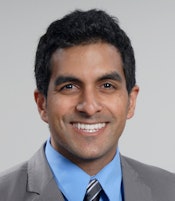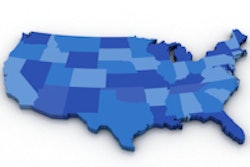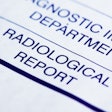
Bob Barker might be horrified, but radiology trainees have limited knowledge of the costs of commonly performed imaging studies. The finding is bad news in a healthcare environment in which physicians are increasingly expected to help curb expenditures, according to a new study in the American Journal of Roentgenology.
A 2013 report published in the Journal of the American Medical Association showed that physicians influence approximately two-thirds of healthcare spending, wrote a team led by Dr. Arvind Vijayasarathi of Emory University. However, plenty of studies have shown that their knowledge of the cost of the services they order and provide is inadequate. In fact, when Vijayasarathi and colleagues conducted their study, they found that almost half of the radiology trainees incorrectly estimated the costs of five commonly ordered exams.
 Dr. Arvind Vijayasarathi of Emory University.
Dr. Arvind Vijayasarathi of Emory University.Part of the problem is that radiology training rarely covers the costs of imaging, Vijayasarathi told AuntMinnie.com.
"I know I was never specifically taught the cost of various imaging exams, and if residents don't know the relative costs between studies, it's hard to assess what kind of value we're providing," he said. "Across medicine, resources have become more limited, and payment models are changing. It's important that we know what these exams cost."
Who knows what?
In 2014, Vijayasarathi's group distributed an online survey to 5,325 U.S. radiology residents and fellows who were members of the American College of Radiology (ACR). A total of 1,066 responded, for a response rate of 20%.
The survey asked participants to provide information about their year of training, any relevant advanced degrees (such as Master of Public Health), and the number of hours of formal healthcare economics education they had received. It also asked them to estimate Medicare fees for five imaging exams: two-view chest x-ray, contrast-enhanced CT of the abdomen and pelvis, unenhanced MR of the lumbar spine, complete abdominal ultrasound, and unenhanced CT of the brain (AJR, November 2015, Vol. 205:5, pp. 929-935).
Survey participants were spread fairly equally from the second year of residency to the postgraduate level, according to the authors. About 11% had relevant advanced degrees.
Only 17.1% of all responses correctly estimated exam costs, while 65.3% were overestimations and 17.6% were underestimations. Forty-five percent of survey participants inaccurately estimated the cost of each of the five exams.
The trainees' knowledge of costs did not improve even as they proceeded through their program, participated in education about healthcare economics, or earned additional degrees, the researchers found.
| Costs of imaging exams vs. resident estimates | ||
| Exam | Actual Medicare fee | Survey participants' median estimate |
| 2-view chest x-ray | $31.17 | $50 |
| Contrast-enhanced CT of abdomen and pelvis | $327.42 | $400 |
| Unenhanced MR of lumbar spine | $246.10 | $1,000 |
| Unenhanced CT of brain | $125.02 | $300 |
| Complete abdominal ultrasound | $142.94 | $200 |
Ninety-one percent of survey participants reported an inadequate knowledge of imaging costs, and 89.7% said they wanted more focused education on the topic, the authors wrote.
"This indicates that currently available educational programs -- whether advanced degree programs or formal education embedded in diagnostic radiology residencies and fellowships -- are not adequately educating radiologists in this area," they wrote. "[We] believe that more targeted education is warranted, and our survey indicates that such education would be well received."
Radiologists as stewards
Radiologists are well-positioned to serve as consultants on the use of imaging and, therefore, as stewards of healthcare resources, according to study co-author Dr. Richard Duszak.
"As society increasingly expects physicians to be good stewards of finite healthcare resources, we all need at least some understanding of costs of services so we can help our patients make informed decisions about getting the best bang for their healthcare buck," he told AuntMinnie.com. "And if radiologists really want to take on a greater role as consultants, particularly with regard to guiding the most appropriate use of imaging, knowledge of the costs of those studies will be imperative."
How can trainee education on imaging exam costs be improved? It may be fairly easy, Duszak said.
"We need to incorporate information about costs into our trainees' clinical curriculum, and that's actually pretty easy to do," he said. "For example, every time we lecture about a particular service, a simple slide about national average Medicare pricing would go a long way. For practicing radiologists, including such material in [continuing medical education (CME)] programs would be similarly useful. And as we roll out new clinical decision-support tools, Medicare prices could supplement current information on appropriateness criteria scores and radiation dose."




















